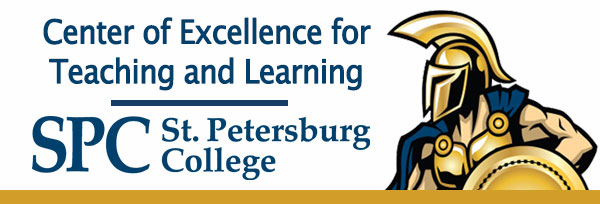Summer Institute Day 2 Session 2: Collaborative Learning
Research shows that educational experiences that are active, social, contextual, engaging, and student-owned lead to deeper learning.
In this second day of workshops for Summer Institute 2022, participants had the opportunity to learn all about collaborative learning: what it is, how it benefits students and improves learning, and how to effectively utilize collaborative learning strategies in the online classroom.
Collaborative Learning is a form of peer learning that involves peers/students interacting to learn and involves interdependence of the students working towards the goal (McKeachie, 2002). Collaborative Learning approaches involve pupils working together on activities or learning tasks in a group small enough to ensure that everyone participates. Pupils in the group may work on separate tasks contributing to a common overall outcome, or work together on a shared task. This is distinct from unstructured group work (Education Endowment Foundation).
The session began with a collaborative activity that helped establish an understanding of the attitudes about collaborative learning, both from a student and instructor perspective. The activity, “Tug of War” This framework consists of seven components that establish the foundation for a successful collaborative environment. The seven components of the Collaborative Learning Framework are Identify the goal or objective,Team Formation, Team Management, Structures for Collaborative Activities, Assessment, and Reflection
The Collaborative Learning Framework
- Fostering a Collaborative Environment – According to Irene Poort, Ellen Jansen & Adriaan Hofman in their (2022) research titled Does the group matter? Effects of trust, cultural diversity, and group formation on engagement in group work in higher education, it was shown that both trust and diversity are strong drivers of success in collaborative activities. To create a collaborative environment it is important that there be interaction and an atmosphere of mutual respect in which communication is open, people are respected and not afraid to fail. It should have no hierarchical arrangement while being student centered, engaging, and safe.
- Identify the goal or objective – Many students have had undesirable experiences
and outcomes with collaborative activities so it is important to explain why working as a team is important to both the success of the activity and for the benefit of student learning. - Team Formation – There are a number of ways that teams can be formed:
- Random: Group students randomly. Simplest for Faculty
- Homogeneous: Group students based on similar academic achievement levels. Challenging for low achievers
- Heterogeneous: Group students based on different academic achievement levels. Good for low achievers.
- Interest: Group students based on their similar interests.
- Learning Style or other Assessment Tool: Group students based on their multiple intelligences, VARK, DISC, 4 Tendencies, etc.
- Student Choice: Some research shows this can motivate students
- Team Management – Guide students in collaborative groups by:
- Identifying roles
- Deciding on communication tools and schedule
- Establishing a timelines
- Dividing project responsibilities
- Establishing procedures for handling disagreements
- Creating team contracts
- Structures for Collaborative Activities – Structures are interaction organizers that guide learning during the process of completing a collaborative task. Successful structures provide explicit instructions, require students to assume a variety of roles of responsibility, and help ensure all team members are accountable for contributing to the end product. Some collaborative structures are:
- Collaborative questions
- Collaborative presentations
- Collaborative videos
- Collaborative project
- Socratic seminars
- Collaborative text analysis
- Peer editing
- Peer-assessment
- Jigsaw
- Assessment – Collaborative assessment is about team outcomes, and the processes used to get to those outcomes, not just the finished product. It is important to hold individuals accountable for their contribution to the team. This can be done by asking students to asses their own contributions to the team, and/or having them evaluate other members’ contributions.
- Reflection – Thinking about thinking is essential to student success. But Reflection is different than Metacognition. Reflection offers students the opportunity to look back at both their learning and their processes for learning to identify successes and opportunities for fine tuning. Some sample reflections are:
- Note to your future self
- Text submission to a dropbox
- Journal Entry
- Example Inventories
Attendees then had an opportunity to work in collaborative groups to apply the framework as they built a lesson together and then shared their plans back with the entire group.
For more assistance, contact the IDEAS team.
Resources used for the presentation:
- 4 misconceptions of online learning. (May 24, 2022). EDUCAUSE Review | EDUCAUSE.
- 4 Things You Don’t Know About the Jigsaw Method
- Collaborative Learning: Its Impact on College Students’ Development and Diversity
- Four Tendencies Summary
- Group Work vs. Collaborative Learning: Is There a Difference?
- Irene Poort, Ellen Jansen & Adriaan Hofman (2022) Does the group matter? Effects of trust, cultural diversity, and group formation on engagement in group work in higher education, Higher Education Research & Development, 41:2, 511-526, DOI: 10.1080/07294360.2020.1839024
- Kagan Online
- Majority of workers who quit a job in 2021 cite low pay, no opportunities for advancement, feeling disrespected
- McKeachie, W. J., & Hofer, B. (2002). Teaching tips: Strategies, research, and theory for college and University Teachers. Houghton Mifflin Company.
- The Two Dimensions of Positive Interdependence
- UK Education Endowment Foundation




